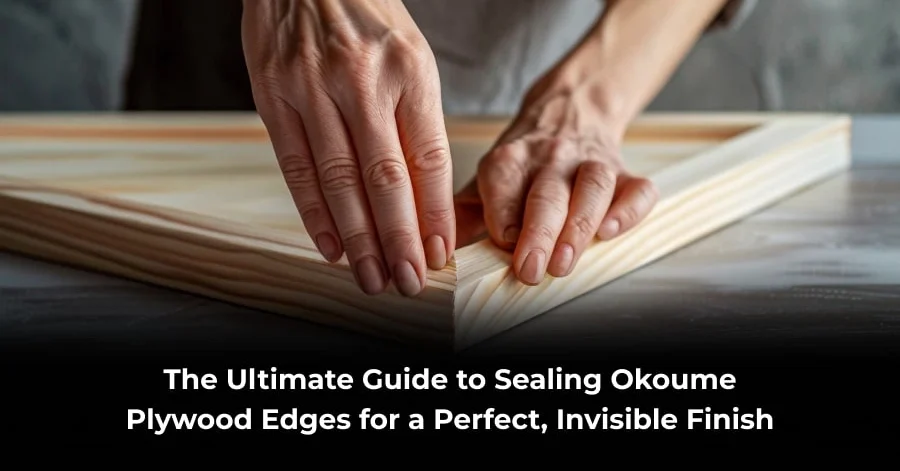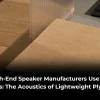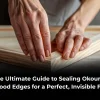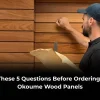When it comes to achieving a premium finish in woodworking, edge treatment is one of the most overlooked steps—yet it is also one of the most important. Whether you’re building furniture, marine structures, cabinets, or decorative panels, sealing the edges of Okoume Plywood is key to ensuring longevity, durability, and beauty. This lightweight yet strong material is preferred by professionals, especially when working with okoume marine plywood, thanks to its moisture resistance, workability, and excellent finishing qualities.
However, even the highest-grade Okoume Plywood can show vulnerability at its edges when left untreated. The edges tend to absorb moisture faster than the surface, which can eventually lead to swelling, warping, or reduced structural strength. That’s exactly why mastering the art of sealing the edges is essential. In this ultimate guide, you’ll learn step-by-step techniques, expert tips, materials to use, common mistakes to avoid, and how to get that perfect, invisible finish that elevates your project from good to exceptional.
Let’s dive in!
Why Sealing Okoume Plywood Edges Matters
Because of its open-grain structure, Okoume Plywood absorbs finish materials rapidly—especially on the edges. This becomes even more critical when working with okoume marine plywood, which is often exposed to moisture-rich environments.
Top reasons sealing edges is essential:
- Prevents moisture absorption
- Strengthens the plywood
- Enhances durability
- Provides a smooth surface for staining or painting
- Ensures an invisible, seamless finish
- Protects against warping, delamination, and cracking
If you buy your project materials from a woodworking supplies store, the experts will often recommend edge sealing as a mandatory step—especially for marine, furniture, or outdoor-grade works.
Step-by-Step Guide to Seal Okoume Plywood Edges
Below is a professional-grade, easy-to-follow process for sealing the edges of Okoume Plywood for a flawless, invisible finish.
Step 1: Prepare the Edges Properly
Start by sanding the edges of the Okoume Plywood using 120-grit sandpaper. The goal is to remove splinters, fuzziness, and manufacturing marks from the plywood edges. Sanding also ensures the sealing agents penetrate evenly.
If you’re working with okoume marine plywood, sanding becomes even more important because marine-grade Okoume is often denser and may require additional smoothing to achieve the perfect finish.
After sanding, wipe the edges with a clean cloth to remove dust. Your local woodworking supplies store can guide you on the best sanding tools to use for smoother results.
Step 2: Apply a High-Quality Wood Sealer
The first layer is always a sealing or penetrating coat.
Recommended Sealers for Okoume Plywood:
- Epoxy resin (most durable)
- Oil-based wood sealer
- Marine-grade varnish
- Shellac-based sanding sealer
Epoxy resin is the best for okoume marine plywood because it provides superior waterproofing and toughness.
Use a small brush to coat the edges evenly. Let the sealer penetrate deeply—it will help strengthen the fibers of the Okoume Plywood and prepare the surface for additional finishing layers.
Step 3: Sand Between Coats
After the first coat dries, lightly sand the edges with 220-grit sandpaper. This helps achieve:
- Smoothness
- Even absorption
- Better bonding of subsequent coats
Repeat this step for 2–3 more coats depending on the exposure level.
Marine projects generally need 3–4 coats to ensure the okoume marine plywood edges are fully sealed.
Step 4: Use an Edge-Filling Compound (Optional but Recommended)
For a truly invisible finish, a filler helps level out the plywood layers.
Use:
- Epoxy filler
- Wood putty
- Marine-grade fairing compound
Apply the filler using a putty knife, let it dry, then sand until perfectly flush with the plywood surface.
Most woodworking supplies stores carry lightweight fillers that are easy to sand and ideal for premium finishing work.
Step 5: Apply Finish Coats (Varnish, Paint, or Polyurethane)
Once sealed and smooth, apply finishing coats depending on your final look. You can choose:
- Clear varnish (for natural wood aesthetics)
- Paint (for colored finishes)
- Polyurethane (for maximum protection)
Finish coats not only protect the sealed edges but also blend them with the surface of the Okoume Plywood for that invisible, seamless appearance.
For okoume marine plywood, marine varnish or epoxy+varnish combo gives the longest lifespan and water resistance.
Techniques for Achieving a Perfect Invisible Finish
Getting that flawless, invisible finish requires technique. Here are expert-level tips that woodworking professionals swear by:
- Use Thin, Even Coats – Thick coats look uneven and crack easily. Thin coats help achieve a smooth finish.
- Sand Gently and Consistently – Over-sanding can expose the layers again, while under-sanding leaves rough patches. Gentle, consistent sanding prevents imperfections.
- Match the Finish to the Environment – Indoor furniture may need simple polyurethane, while marine items require epoxy and marine varnish.
- Select High-Quality Tools – Brushes, sandpaper, and sealing products from a trusted woodworking supplies store always deliver superior results.
- Allow Proper Drying Time – Rushing between coats leads to cloudiness, peeling, or trapped air bubbles.
Common Mistakes to Avoid When Sealing Okoume Plywood
Even experts sometimes make errors. Avoid these mistakes:
1. Not sanding properly- Unprepared edges lead to uneven absorption of sealers.
2. Using low-quality sealers – Cheap sealers do not penetrate well and peel over time—especially on okoume marine plywood.
3. Applying too few coats – One coat is never enough for long-term protection.
4. Skipping filler – Skipping filler means you won’t get that truly invisible edge.
5. Rushing the process – Proper finishing takes time—don’t rush drying or sanding steps.
Where to Buy Quality Okoume Plywood and Marine-Grade Supplies
If you want the best results, start with the best materials. A reliable woodworking supplies store will not just sell products but also guide you on the right sealers, fillers, and tools based on your project.
Premium Okoume Plywood and okoume marine plywood are available from specialized suppliers who understand quality standards for marine, furniture, and architectural projects.
Conclusion
Sealing the edges of Okoume Plywood is one of the simplest yet most powerful ways to enhance the durability, beauty, and longevity of your woodworking projects. Whether you’re crafting premium furniture or building marine structures using okoume marine plywood, a properly sealed edge ensures protection, strength, and an invisible, professional finish.
By following the step-by-step process—sanding, sealing, filling, and finishing—you can transform raw plywood into a high-end, long-lasting product. And with guidance from a trusted woodworking supplies store, the entire process becomes easier, more efficient, and far more reliable.
If you are looking for the highest quality Okoume Plywood, marine-grade plywood, or finishing supplies, AEW Woods is a trusted name in the industry. Their commitment to premium wood products, durability standards, and customer satisfaction makes them a preferred choice among professionals and hobbyists alike.
Frequently Asked Questions:
1. Why is sealing Okoume Plywood edges so important?
Because the edges absorb more moisture than the surface. Sealing protects the wood, prevents swelling, and ensures a smooth finish.
2. Can I use epoxy on okoume marine plywood?
Yes! Epoxy is the best sealer for okoume marine plywood due to its excellent waterproofing properties.
3. How many coats of sealer are needed?
Typically 2–3 coats for indoor projects and 3–4 coats for marine applications.
4. Can I paint over sealed Okoume Plywood?
Absolutely. Once sealed and sanded, the surface becomes perfect for painting or varnishing.
5. Where can I buy high-quality Okoume Plywood?
Your local woodworking supplies store or trusted suppliers like AEW Woods offer the best-grade products.






